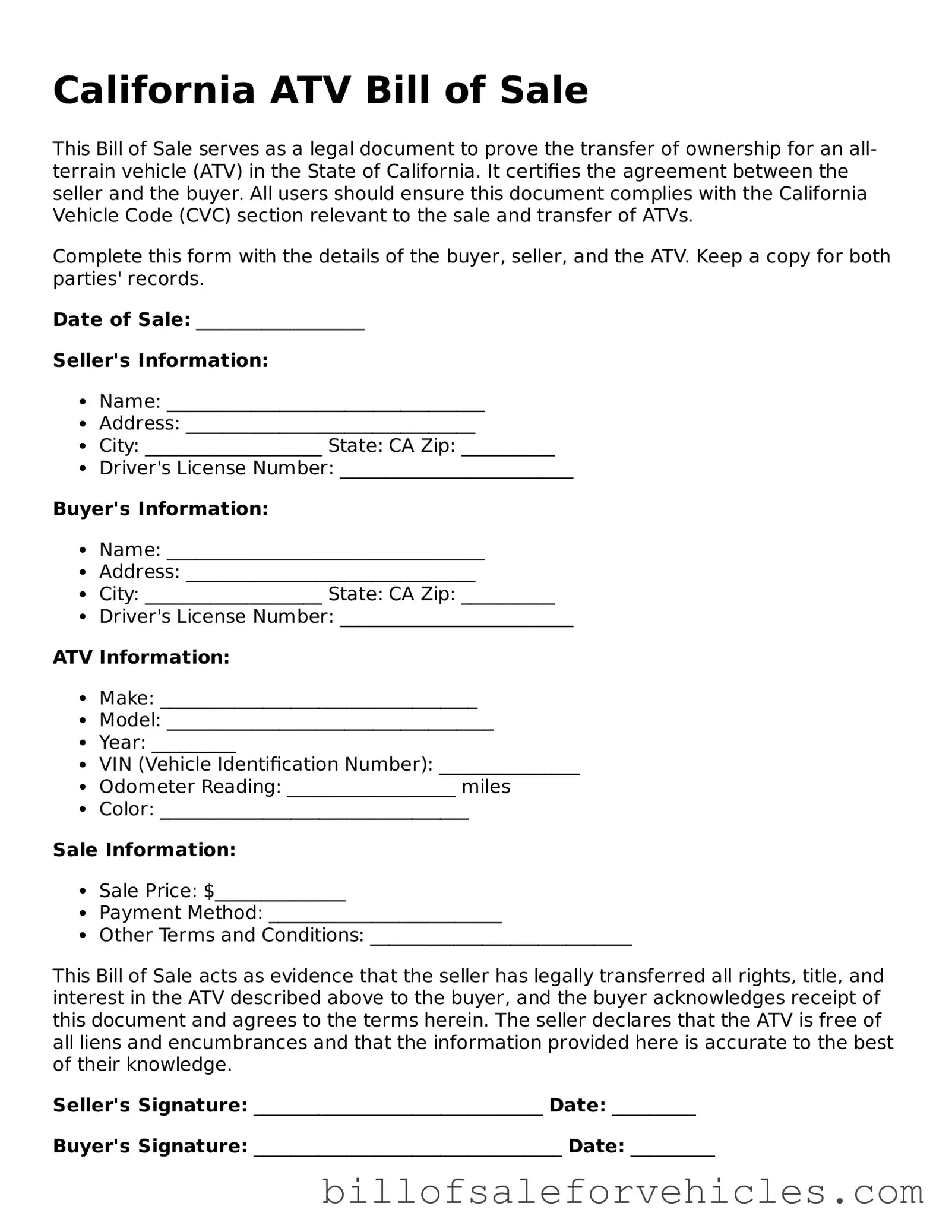California ATV Bill of Sale
This Bill of Sale serves as a legal document to prove the transfer of ownership for an all-terrain vehicle (ATV) in the State of California. It certifies the agreement between the seller and the buyer. All users should ensure this document complies with the California Vehicle Code (CVC) section relevant to the sale and transfer of ATVs.
Complete this form with the details of the buyer, seller, and the ATV. Keep a copy for both parties' records.
Date of Sale: __________________
Seller's Information:
- Name: __________________________________
- Address: _______________________________
- City: ___________________ State: CA Zip: __________
- Driver's License Number: _________________________
Buyer's Information:
- Name: __________________________________
- Address: _______________________________
- City: ___________________ State: CA Zip: __________
- Driver's License Number: _________________________
ATV Information:
- Make: __________________________________
- Model: ___________________________________
- Year: _________
- VIN (Vehicle Identification Number): _______________
- Odometer Reading: __________________ miles
- Color: _________________________________
Sale Information:
- Sale Price: $______________
- Payment Method: _________________________
- Other Terms and Conditions: ____________________________
This Bill of Sale acts as evidence that the seller has legally transferred all rights, title, and interest in the ATV described above to the buyer, and the buyer acknowledges receipt of this document and agrees to the terms herein. The seller declares that the ATV is free of all liens and encumbrances and that the information provided here is accurate to the best of their knowledge.
Seller's Signature: _______________________________ Date: _________
Buyer's Signature: _________________________________ Date: _________
Note: It's recommended that both parties retain a signed copy of this document for their records and perform a vehicle history check before completing the transaction. This document does not act as a title transfer; the buyer must submit this Bill of Sale to the California Department of Motor Vehicles (DMV) as part of the title transfer process.
